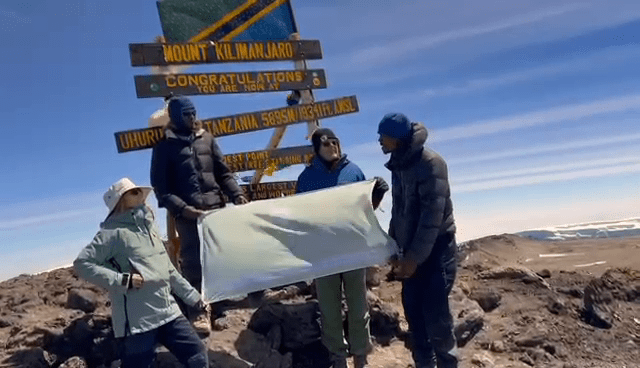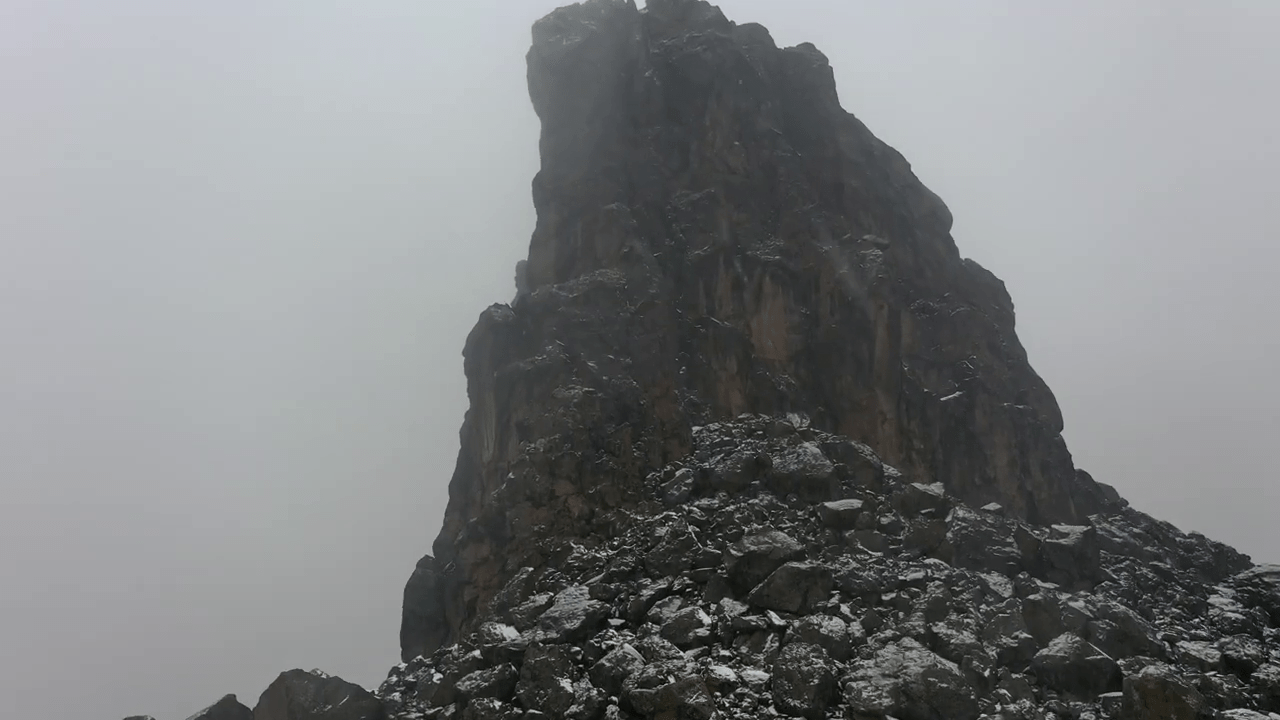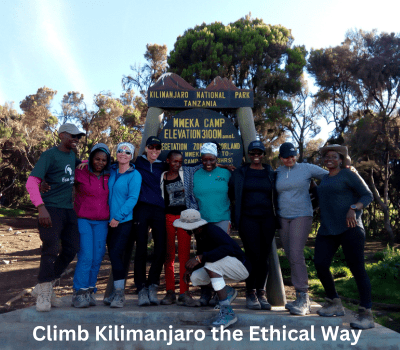Can I Climb Kilimanjaro Without Any Hiking or Trekking Experience?

Introduction: Is Kilimanjaro for Beginners?
Standing tall at 5,895 meters, Mount Kilimanjaro is one of the world’s most iconic trekking destinations. But what if you’ve never strapped on hiking boots or set foot on a mountain trail? Can a complete beginner really reach the summit of Uhuru Peak?
The short answer is: yes, you can! Kilimanjaro is unique among the world’s tallest mountains because it doesn’t require technical climbing skills. That said, it demands physical endurance, mental resilience, and careful preparation. In this article, we’ll explore how first-timers without any trekking or hiking background can prepare for and conquer Africa’s highest peak—safely and successfully.
Understanding Kilimanjaro’s Physical Demands
Kilimanjaro isn’t just a walk in the park. The trek typically lasts 6–9 days, depending on the route, and includes long daily hikes, altitude gain, and temperature fluctuations. A typical day involves 4–8 hours of hiking, while summit night can stretch up to 12 hours or more.
What makes Kilimanjaro challenging isn’t steep cliffs or rock climbing—it’s the altitude. Oxygen levels drop as you ascend, and your body must acclimate to thinner air. This is why even fit gym-goers or marathon runners can struggle if they’re not altitude-ready.
If you’re not used to hiking for extended periods or carrying a daypack, you’ll need to build up your endurance in advance. However, with proper training and pacing, even someone starting from zero can complete the journey.
How Beginners Successfully Summit Uhuru Peak
Thousands of people with no trekking background reach the top of Kilimanjaro each year. Their success often comes down to three key factors:
- Choosing the Right Route: Routes like the Lemosho or Northern Circuit are longer and offer better acclimatization, giving beginners more time to adjust.
- Hiring a Reputable Guide: Licensed companies like Eco-Africa Climbing provide expert support, safety monitoring, and encouragement every step of the way.
- Training in Advance: Starting 8–12 weeks before your trip, focus on long walks, stair climbing, and increasing your cardiovascular fitness.
By following these steps, even first-time hikers can dramatically increase their chances of a safe and successful climb.
Why Kilimanjaro Is Considered a Non-Technical Climb
Unlike Mount Everest or Denali, Kilimanjaro does not require ropes, crampons, or ice axes. All the major routes—like Machame, Lemosho, or Marangu—are trekking paths that involve walking, not climbing.
That said, summit night can be mentally and physically taxing. The high altitude, cold temperatures, and long hours can push anyone to their limits—regardless of prior experience. But with the right attitude, proper gear, and a supportive guide team, you don’t need a mountaineering resume to make it to the top.
Common Mistakes First-Time Trekkers Make
Beginners often make the same avoidable mistakes. Here are a few and how to overcome them:
- Poor Gear: Wearing new boots or non-breathable clothing can cause blisters and discomfort. Always test your gear in advance.
- Underestimating Altitude: Skipping acclimatization days or ignoring early symptoms of altitude sickness can lead to serious issues. Take it slow and learn about AMS.
- Neglecting Training: Even walking for hours daily requires preparation. Start with long walks and gradually add weight to your backpack.
- Not Eating or Drinking Enough: Altitude can suppress appetite, but fueling your body with nutritious meals and staying hydrated is key to maintaining energy.
Avoiding these mistakes improves your chances of making it safely to the summit.
The Role of Guides for First-Time Climbers
Embarking on a journey up Mount Kilimanjaro without prior hiking experience can be daunting. However, the presence of experienced guides transforms this challenge into an achievable adventure. These professionals are not just navigators; they are your mentors, motivators, and safety officers throughout the trek.
Guides are trained to recognize early signs of altitude sickness, manage emergencies, and adjust the pace to suit the group’s capabilities. Their knowledge of the mountain’s terrain, weather patterns, and ecological zones ensures that climbers are well-prepared for each day’s journey. For beginners, this support is invaluable, providing confidence and security on unfamiliar ground.
Moreover, guides often share insights into the local culture, flora, and fauna, enriching the climbing experience. Their stories and songs can uplift spirits during challenging moments, fostering a sense of camaraderie among climbers. In essence, a guide’s presence is a cornerstone of a successful and enjoyable Kilimanjaro ascent for novices.
Training from Scratch: Preparing Your Body for the Climb
Starting a training regimen without any prior hiking background requires a structured and gradual approach. The goal is to build cardiovascular endurance, muscular strength, and mental resilience. Begin with brisk walking sessions, gradually increasing duration and intensity over several weeks. Incorporate stair climbing or hill walks to simulate the mountain’s inclines.
Strength training focusing on the legs, core, and back will enhance stability and reduce fatigue during the climb. Exercises like squats, lunges, and planks are beneficial. Flexibility routines, including yoga or stretching, can prevent injuries and improve overall mobility.
Consistency is key. Aim for at least three to four training sessions per week, progressively challenging your body while allowing adequate rest. Remember, the objective is not to become an athlete but to condition your body to handle long hours of trekking at high altitudes.
Building Mental Resilience: The Psychological Aspect of Climbing
Climbing Kilimanjaro is as much a mental endeavor as it is physical. The altitude, changing weather conditions, and physical exertion can test one’s psychological limits. Developing mental toughness is crucial for overcoming moments of doubt and fatigue.
Visualization techniques, where you imagine successfully reaching the summit, can boost confidence and motivation. Setting small, achievable goals for each day helps maintain focus and a sense of accomplishment. Mindfulness practices, such as meditation or controlled breathing, can manage stress and enhance mental clarity.
Engaging with fellow climbers and sharing experiences can also provide emotional support. Remember, it’s normal to face challenges; resilience lies in acknowledging difficulties and persisting despite them.
Choosing the Right Route: Beginner-Friendly Options
Selecting an appropriate route is vital for first-time climbers. Routes like the Marangu and Lemosho are often recommended for beginners due to their gradual ascent profiles and established infrastructure. The Marangu route, known as the “Coca-Cola” route, offers hut accommodations, reducing the need to carry camping gear.
The Lemosho route, while longer, provides excellent acclimatization opportunities and scenic diversity, increasing the chances of a successful summit. It’s essential to consider factors like duration, difficulty, and support services when choosing a route.
Consulting with experienced tour operators can provide personalized recommendations based on your fitness level and preferences. Their expertise ensures that you select a path that aligns with your capabilities, enhancing safety and enjoyment.
Success Rates for First-Time Climbers
Embarking on a journey to summit Mount Kilimanjaro without prior hiking experience is a formidable challenge, yet many first-time climbers achieve this feat. Success rates vary significantly depending on the chosen route and the duration of the climb. Longer routes, which allow for better acclimatization, tend to have higher success rates.
For instance, the 8-day Lemosho route boasts a success rate of approximately 90%, while the 9-day Northern Circuit route has an even higher success rate, ranging from 95% to 98%. These routes provide gradual ascents and ample time for the body to adjust to the altitude, which is crucial for beginners. Conversely, shorter routes like the 5-day Marangu route have lower success rates, around 30%, due to the rapid ascent and limited acclimatization time.
It’s important to note that success is not solely determined by physical fitness but also by mental resilience, proper preparation, and adherence to safety guidelines. With the right mindset and support, first-time climbers can significantly increase their chances of reaching Uhuru Peak.
Packing Essentials for Novice Trekkers
Proper gear is vital for a safe and comfortable Kilimanjaro climb. For beginners, investing in quality equipment can make a significant difference. Essential items include:
- Footwear: Sturdy, well-broken-in hiking boots with good ankle support.
- Clothing: Layered clothing system to adapt to varying temperatures, including moisture-wicking base layers, insulating mid-layers, and waterproof outer layers.
- Accessories: Warm hat, gloves, sunglasses with UV protection, and a headlamp with extra batteries.
- Sleeping Gear: A four-season sleeping bag rated for temperatures as low as -15°C (5°F).
- Hydration: Reusable water bottles or a hydration bladder, along with water purification tablets.
- Daypack: A comfortable backpack to carry daily essentials like snacks, water, and extra clothing.
Packing light yet adequately is key. Overpacking can lead to unnecessary fatigue, while underpacking may leave you unprepared for the mountain’s challenges. Consulting with your tour operator can provide personalized packing recommendations.
Acclimatization Strategies for Beginners
Acclimatization is the process by which the body adjusts to lower oxygen levels at higher altitudes. For beginners, understanding and implementing effective acclimatization strategies is crucial to prevent altitude sickness and increase the likelihood of a successful summit.
Key strategies include:
- Choosing Longer Routes: Opt for routes that span 7 to 9 days, allowing more time for gradual altitude gain.
- Climb High, Sleep Low: Incorporate hikes to higher elevations during the day, followed by sleeping at lower altitudes to aid adaptation.
- Hydration: Drink plenty of fluids to stay hydrated, which helps in acclimatization.
- Medication: Consult with a healthcare provider about medications like acetazolamide (Diamox) that can aid in acclimatization.
- Listen to Your Body: Pay attention to symptoms of altitude sickness and communicate with your guide promptly.
Implementing these strategies can significantly reduce the risk of altitude-related issues and enhance the overall climbing experience for novices.
Real Stories from First-Time Climbers
Many individuals without prior hiking experience have successfully summited Kilimanjaro, often sharing inspiring stories of determination and transformation. For example, a climber recounted their journey, highlighting the importance of mental fortitude and the support of experienced guides. They emphasized that, despite initial doubts, reaching the summit was achievable through perseverance and proper preparation.
Another first-time trekker shared their experience of training for several months, focusing on cardiovascular fitness and strength training. They credited their success to the gradual acclimatization provided by the longer route they chose and the encouragement from their climbing group.
These testimonials underscore that, with the right mindset, preparation, and support, even those new to hiking can conquer Mount Kilimanjaro.
Conclusion: No Experience? No Problem—with the Right Preparation
Climbing Mount Kilimanjaro without any hiking or trekking experience may sound intimidating—but thousands of first-timers do it every year. With guided support, a proper training plan, the right gear, and a positive mindset, even total beginners can reach the roof of Africa.
What matters most isn’t your resume—it’s your readiness to commit, prepare, and trust your guide. Choose beginner-friendly routes like the Lemosho Route or the Northern Circuit, train steadily, and go with a responsible, safety-first operator like Eco-Africa Climbing.
Frequently Asked Questions (FAQs)
Is Kilimanjaro safe for first-time trekkers?
Yes, as long as you choose a certified guide, follow a longer route, and prepare properly, Kilimanjaro is safe even for beginners.
How fit do I need to be to climb Kilimanjaro?
You don’t need to be an athlete. Moderate fitness, stamina for long walks, and good health are enough for most routes.
Can I climb Kilimanjaro without any training?
Technically yes, but it’s highly discouraged. Training increases your chances of summiting and makes the experience more enjoyable.
What’s the best route for someone with no hiking experience?
The 8 Days Lemosho and 9 Days Northern Circuit routes offer great acclimatization and scenic diversity for first-timers.
What should I pack if I’ve never trekked before?
Focus on good boots, layered clothing, a warm sleeping bag, and hydration gear. Check our full gear checklist to get started.
Start Your Kilimanjaro Journey with Eco-Africa Climbing
Just getting started? You don’t need to have years of trekking under your belt to climb Kilimanjaro. You just need the right team.
Our experienced guides at Eco-Africa Climbing have helped countless beginners summit successfully—safely and confidently.
Request your quote or contact us today and let’s turn your first trekking adventure into a life-changing summit experience.
Share:
Related Posts

bathroom on mountain kilimanjaro
Bathroom on Mountain Kilimanjaro: What to Expect and How to Prepare Introduction One of the most common — and least discussed — questions from people

Are Guides Readily Available in Tanzania Without Prior Booking?
Are Guides Readily Available in Tanzania Without Prior Booking? Introduction: Should You Risk Climbing Without Pre-Booking? Climbing Mount Kilimanjaro is a dream for many adventurers.

How Can I Find a Reliable Local Guide for My Kilimanjaro Expedition?
How Can I Find a Reliable Local Guide for My Kilimanjaro Expedition? Introduction: Why the Right Guide Is Key to Kilimanjaro Success Climbing Mount Kilimanjaro

Is Climbing Kilimanjaro Dangerous for Individuals Without Mountaineering Experience?
Is Climbing Kilimanjaro Dangerous for Individuals Without Mountaineering Experience? Introduction: The Myth of Danger and Experience Many aspiring adventurers wonder if climbing Mount Kilimanjaro is
